There are two ways to reset your tire pressure light depending on your trim level
If you have a fancy color screen:
If you don’t have a fancy screen:
The tire pressure monitoring systems (TPMS) on some newer Honda cars have reverted to the old-style TPMS called indirect TPMS. Honda Civic years 2016, 2017, 2018, 2019, and 2020 can be a little finicky when it comes to resetting the TPMS light or calibrating the system. This short article will explain how to turn off the TPMS light on your Honda Civic.
Image courtesy of American Honda Motor Corp.I case you’re unfamiliar, the TPMS light is an orange light that looks a bit like a horseshoe with and exclamation point in the middle. It’s supposed to be a cross-section of a tire. The exclamation point is saying, “hey, the tire pressure is low!”.
This where the frustration can occur. The TPMS light can become The Little Boy Who Cried Wolf. The light is on, you set the tire pressure, and the TPMS light is still on. Arrggh! A strategically located piece of electrical tape can solve the problem, or better yet a picture of your favorite deity will no doubt benefit from a warm orange glow shining through.
The TPMS light can become The Little Boy Who Cried Wolf. The light is on, you set the tire pressure, and the TPMS light is still on. Arrggh! A strategically located piece of electrical tape can solve the problem, or better yet a picture of your favorite deity will no doubt benefit from a warm orange glow shining through.
Honda’s newer TPMS system doesn’t actually measure the tire pressure like their older systems did. Instead it counts the revolutions of each of the wheels. If a tire is low, the radius between the axle and road will be smaller. The effective circumference will also be smaller. A smaller wheel must spin more times to go the same distance as a larger wheel.
All cars with ABS have a way to count wheel rotation already built in — the wheel speed sensors. The speed sensors for the ABS do double duty and work for the TPMS system as well. Every time you reset tire pressure, you must calibrate the system so it knows how big each wheel is with the proper tire pressure.
One of the main problems is that it’s just not accurate. You can drive around with a tire that’s 30% low and the system won’t flag it. They tell us it will, and it might, sometimes, but it’s nowhere near as good as direct TPMS. Another problem is that you’ll need to reset the TPMS every time you mess with the wheels. Replace a tire, reset the system. Rotate the wheels, reset the system. The final thing might not be a “problem”, but I love direct TPMS systems that tell you the exact tire pressure for each wheel. Hop in the car in the morning, see all the tires at 38 PSI, and I’m confident my car will handle well and I’m not going to get stuck.
If you want to know more about resetting tire pressure light on other types of tire pressure monitoring systems, here’s an older article we published around 2007 when TPMS was still pretty new.
You can use your vehicle’s hard reset button, a tool like an OBD-II scanner, or manually calibrate the sensors to reset the tire pressure light. If none of these work, bring your vehicle to a dealership to reset the tire pressure light and get help assessing the problem.
Correct tire pressure keeps you safe and prevents accidents. It even saves you money by getting better mileage on evenly inflated tires. Whenever your vehicle’s sensors detect a tire with unusual air pressure, a light will illuminate on your dash. But how do you get it to go away?
To reset your TPMS light, you should make sure the problem is solved first. Here to help you navigate this situation is
Jerry
, a
trusted comparison tool
for helping drivers save money on
car insurance
. We’ll cover why your TPMS light is on, five ways to reset the light, and whether you can remove this function or not.
Why does the tire pressure light illuminate?
If your TPMS (Tire Pressure Monitoring System) light illuminates, then you either have a problem with your tire pressure or a problem with the monitoring system.
Whenever the air pressure in one or more of your tires is low—or not calibrated correctly—the TPMS light will come on to warn you. You should pull over as soon as possible to check your tire pressure.
Be aware that
cold weather
can affect air pressure. In fact, your tires can lose up to two pounds per square inch (PSI) for every 10 degrees that the temperature goes down. That’s because cold air condenses and takes up less space in your tires.
Direct and indirect TPMS
Most vehicles have both direct and indirect TPMS. Here’s a quick guide to where each sensor is located and why it typically malfunctions.
Direct TPMS (more common on American vehicles)
These sensors are located on the pressure valve or the rim. Data from these sensors are sent to the car’s computer. Bad weather is the most likely cause of the malfunction of direct TPMS.
Data from these sensors are sent to the car’s computer. Bad weather is the most likely cause of the malfunction of direct TPMS.
Indirect TPMS (more common European vehicles)
These sensors are located on a car’s ABS brakes and/or speed sensors on each wheel. As the car moves, these
indirect TPMS
sensors measure wheel rotation speed. This allows the sensor to identify underinflated tires, which rotate much faster compared to properly filled tires.
ZIP Code
ZIP Code
Find Savings!
No long forms. No spam calls. Free Quotes.
4.7/5 App Store Rating, 8,100+ Reviews
Trusted by 1.5+ Million Customers.
How to reset a tire pressure light
It takes less than five minutes to reset a tire pressure light. Here are five ways to reset TPMS:
Here are five ways to reset TPMS:
1. Ensure your tire pressure is correct
Start by assuming that your TPMS light is correct and you have an underinflated tire.
Use a gauge
to check your tire air pressure and then fill them to their correct PSI. You can check your owner’s manual or the tire itself for the target PSI measurement.
If this doesn’t resolve the issue, you can reset the tire pressure light by inflating each tire to its ideal PSI and then deflating the tires to zero. Then inflate again and drive for a couple of minutes at 50 mph to manually calibrate the sensors.
2. Use your vehicle’s TPMS reset button
Some vehicles have a hard reset button that recalibrates the sensors. It’s usually located under the steering wheel but check your owner’s manual to find the location in your model.
Put the key in the ignition and turn it to the ‘ON’ position but don’t start the car. Now, push the reset button for approximately three seconds or until the light starts blinking. Then, start the vehicle and drive for about 20 minutes before turning off the ignition. Note that some newer vehicles have a reset option in Settings on the touchscreen menu instead of a physical button.
Now, push the reset button for approximately three seconds or until the light starts blinking. Then, start the vehicle and drive for about 20 minutes before turning off the ignition. Note that some newer vehicles have a reset option in Settings on the touchscreen menu instead of a physical button.
3. Drive for a few minutes at 50 mph for recalibration
Sometimes, your vehicle just needs a few minutes of moving at a constant speed to calibrate the sensors. Drive for a few minutes at 50 mph and allow the sensors to catch up.
4. Disconnect and reconnect the car battery
Have you tried turning it off and on again? Seriously, your onboard computer may just be glitching and need a reset! While disconnecting and reconnecting your car battery can help reset your TPMS light, be aware that this may cause you to lose your radio presets.
5. Use an aftermarket TPMS reset tool
There are aftermarket products like a TPMS reset tool that can help you reset the tire pressure light. You can also use an OBD-II scanner, which is helpful for confirming the
You can also use an OBD-II scanner, which is helpful for confirming the
OBD code
before resetting the light.
If none of the above tactics works, it’s possible that you have damaged sensors. If you’re facing a flashing tire pressure light, you could be dealing with a broken sensor or a dying battery. Bring your vehicle to a mechanic for assessment and repair. Driving on uneven and underinflated tires can be dangerous!
Can I remove the TPMS function to solve this?
Removing the TPMS is not recommended. In fact, the NHTSA dictates that all new cars from the 2008 model year and newer must have TPMS. This warning system helps keep you and your fellow drivers safe by reducing the risk of dangerous driving with over or underinflated tires.
Finding affordable car insurance
Resetting your tire pressure takes five minutes, but you could save hundreds of dollars in less than 60 seconds with the
Jerry
app.
A licensed broker, Jerry does all the hard work of finding cheap quotes from the top name-brand insurance companies and buying new
car insurance
. Jerry will even help you cancel your old policy.
To ensure you always have the lowest rate, Jerry will send you new quotes every time your policy comes up for renewal, so you’re always getting the coverage you want at the best price. This level of service is why Jerry earned a 4.6/5 rating on the App Store and made it the top insurance app in the country.
“When we added a new car to our family, we were shocked at how high our current insurer was going to hike our rates. We used
Jerry
for some comparison shopping and are now saving around $1000 a year. Thank you, Jerry!” —Darius P.
Compare insurance quotes from 50+ carriers with Jerry in under 45 seconds
ZIP Code
ZIP Code
Find Savings!
Find Savings!
4.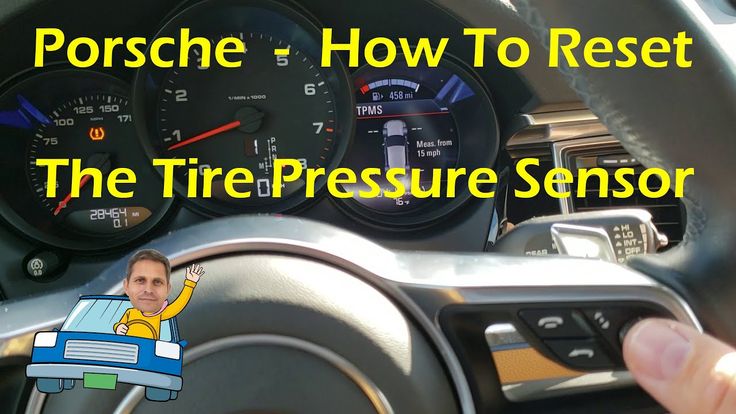 7/5 App Store Rating. Trusted by 2+ Million Customers.
7/5 App Store Rating. Trusted by 2+ Million Customers.
Save article:
The article says:
When the tires are optimally inflated, the low tire pressure indicator (TPMS) does not light up on the vehicle's dashboard. However, in some cases, it lights up even if the pressure is normal. This can't help but be annoying, especially when the tires are inflated normally. In our article today, we will figure out how to reset a tire pressure error.
American and European scientists conducted a study, during which it was found that most drivers do not check whether the wheels are properly inflated before getting behind the wheel of a car.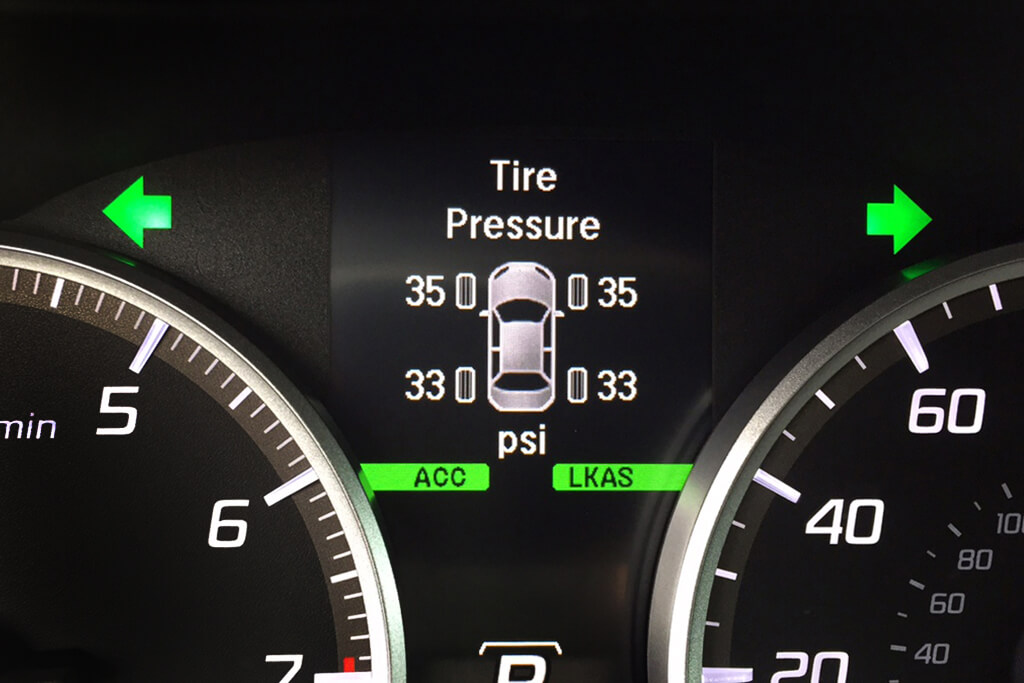 Only 40% of car owners perform such a check - and even then only once every 12 months. This is the reason for a large number of accidents.
Only 40% of car owners perform such a check - and even then only once every 12 months. This is the reason for a large number of accidents.
The TPMS (Tyre pressure monitoring system) system is designed to monitor tire pressure, as well as warn of a malfunction. If the tires are under-inflated or over-inflated, an error will be displayed on the remote control or an audible signal will appear.
What is dangerous too high or, conversely, low pressure? The risk of an accident increases, the car begins to consume more fuel, in addition, the rubber wears out faster.
Photo: Shutterstock
The above devices operate on the same principle. Let's figure out how information about what tire pressure gets to the control panel.
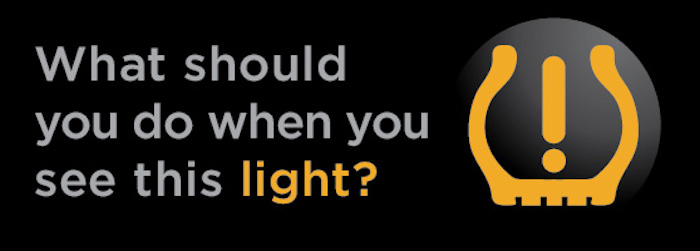
Consider how pressure is calculated by measuring instruments. Typically, the sensor performs a comparison of the angular rotation of the wheel. Knowing the value of this parameter, you can calculate the distance that the wheel will travel in one rotation.
Obviously, if the tires are under-inflated or over-inflated, then the outer diameter of the wheel will be different. Visually, a person cannot determine this change. But the sensor notices even such changes. The system fixes non-compliance with the required parameters.
Visually, a person cannot determine this change. But the sensor notices even such changes. The system fixes non-compliance with the required parameters.
The sensor will still respond, despite the fact that the circumference of the wheel has changed quite a bit. In this situation, it is necessary to find out what mechanical reason led to this. Only in this way can you eliminate the incorrect interpretation of the signals transmitted by the system. This can happen because:

Also, the TPMS system gives an error when you install new wheels or rearrange them.
When, after these steps, a tire pressure error appeared, indicating unbalance, you should reset the settings, and then set the basic parameters. In this case, the control signal may remain even if the basic settings have been selected.
Why such problems may occur:
See also
Velcro or spikes: which rubber is better for the Russian winter?
Read more
How to reset tire pressure error? To begin with, imagine that the TPMS system is working properly and the blinking light indicates a problem with the undercarriage of the machine. The first thing you should do is slowly release the gas. You can not brake sharply, turn the steering wheel. After the car has stopped, inspect the tires to make sure the rubber is not punctured or broken. Then you can check if the tire pressure is normal.
The first thing you should do is slowly release the gas. You can not brake sharply, turn the steering wheel. After the car has stopped, inspect the tires to make sure the rubber is not punctured or broken. Then you can check if the tire pressure is normal.
Pay attention! The TPMS will not always show a tire pressure error. For example, if the tires are slowly deflating, the system will not inform you about the problem. In the same way, she will not notice the error if the tire pressure starts to drop rapidly. This usually happens when a tire ruptures. This feature of the TPMS system is explained by the specifics of identifying and counting nonconformities.
However, in some cases, it happens that the TPMS system indicator is on, but the tires are in perfect condition. How to reset tire pressure error? We understand.
The complex TPMS system in some cases starts to work incorrectly.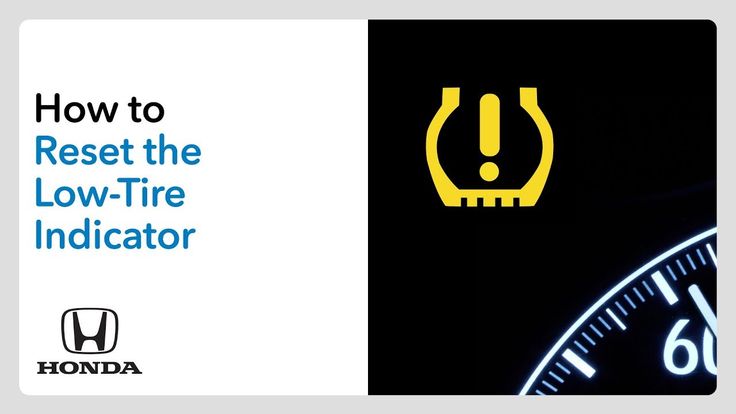 Usually, car owners observe the following picture: a tire pressure error is displayed on the display (the tire is underinflated), but in reality everything is fine with the wheel. You have to reset the tire pressure error. Otherwise, the TPMS system starts to work incorrectly.
Usually, car owners observe the following picture: a tire pressure error is displayed on the display (the tire is underinflated), but in reality everything is fine with the wheel. You have to reset the tire pressure error. Otherwise, the TPMS system starts to work incorrectly.
Photo: Shutterstock
You also have to reset the tire pressure error when there is radio interference from high voltage power lines. Or when sources of radio signals are located in the immediate vicinity. But as soon as you move away from them, the pressure error disappears and the system begins to function properly.
The reason for the malfunction may lie in the sensor, which is "failed". This damage cannot be easily repaired. How to reset a tire pressure error if the sensor flashes, while you hear a beep, lose your vigilance and find it difficult to drive a car? There are 4 ways to fix this problem.
To reset the error, pick up a speed of 80 km / h and continue driving for another 15 kilometers.
This method is the easiest to implement. If your car has this feature, then turn on the cruise control so that the speed does not change. Depending on the model of your car, you will be able to reset the tire pressure error at a speed that exceeds the specified one. After you cover a distance of 15-20 kilometers, maintaining the same speed of 80 km / h, make a stop. Turn off the motor. When you start it again, the tire pressure error will disappear.
Popular articles
How to choose a subwoofer for your car
19.12.2022
1061
From top to bottom, obliquely: how to degrease a car body before painting
12/15/2022
876
Chic, shine, beauty: how to remove scratches on a car with your own hands
9. 12.2022
12.2022
902
Without damage: how to reduce the fuel consumption of your car
11/29/2022
580
How much do they pay for advertising on a car
11/25/2022
3463
Press the tire pressure monitoring system (TPMS) reset button on your car and you will be able to reset the error.
It does not matter what type of low pressure warning system is used. In any case, there will be a sensor on each wheel of your car. Sometimes it may be necessary to reboot the touch system of the car. Read the owner's manual for the vehicle. It contains information on how to reset a tire pressure error. Most often, the instructions indicate which button to press to reset.
It contains information on how to reset a tire pressure error. Most often, the instructions indicate which button to press to reset.
The ignition key must be in the lock. No need to start the car, just turn it to the “on” (“ON”) position. Then press and hold the reset button, which may be under the steering wheel. We are waiting for the low pressure indicator to flash 3 times. After that, you can release the button. We start the car, it should work for 20 minutes. After this time, the computer will calibrate the sensors on the wheels. Now you can turn off the car.
Read also
""
Read more
Lower and then re-inflate the wheels.
Failed to reset tire pressure error using the previous method? Then we inflate all tires to 0.2 bar, this is the pressure that should be according to the recommendations of car manufacturers. Did the error go away? Then we lower the pressure in the tires completely.
Did the error go away? Then we lower the pressure in the tires completely.
Now we pump up the wheels again. The pressure in them should be the same as indicated on the driver's door pillar or in the car's operating instructions. When there are sensors on the wheels, you need to remember about the spare tire. Now you need to drive about 3-5 kilometers, adhering to a speed of 25 km per hour. So you can reset the tire pressure error.
Remove the battery terminals and then connect it to reset the error.
Each car has a computer that receives data from all kinds of vehicle sensors, including TPMS system sensors. However, any electronics can fail. To reset the error, you will have to reboot the system, for which you need to turn off the power.
Photo: Shutterstock
To do this, open the hood. The battery is located under the hood. Disconnect the negative terminal from it. To perform this operation, use a wrench. Then sit in the driver's seat, turn the key to the "ON" position, but do not start the car. Now you need to press the signal for 3 seconds. This will use up the energy that remains in the electrical system of the machine. Then reconnect the battery. This way you can reset the error.
Now you need to press the signal for 3 seconds. This will use up the energy that remains in the electrical system of the machine. Then reconnect the battery. This way you can reset the error.
Sensors keep track of tire pressure. However, you need to be sure that they function properly. Of course, you do not need to constantly walk around with a special measuring device and find out the status of the sensors. It just needs to be calibrated from time to time.
It is performed quite simply. The most important thing to remember is that, depending on the make and model of your car, for each wheel there are pressure parameters strictly defined by the manufacturer for winter and summer. These values should be given to the sensors. How the installation and configuration will be done depends on the controller used.
 Nothing else needs to be configured.
Nothing else needs to be configured. 
For current promotions on the Halva card, which will help you profitably purchase household appliances, you can follow here.
To prevent a tire pressure error from appearing, it is important to calibrate (adjust the TPMS system) every time a change is made. For example, when you installed a new set of wheels, repaired tires, did balancing, and the like. Using TPMS controllers is quite simple. The main thing is to read the instructions for use of the device. And make sure that the tire pressure is the one recommended by the car manufacturer.
See also
"What tires can be put on rims 14, 15 and 16: professional advice"
Read more
Every car owner gets annoyed if the tire pressure error icon lights up on the dashboard. This indicator informs you that something is wrong with the wheels. However, even if the tire pressure is optimal, the tire pressure error must be reset.
However, even if the tire pressure is optimal, the tire pressure error must be reset.
The fact is that if the TPMS system icon constantly signals insufficient pressure, the driver will not be able to know when the rubber will actually begin to deflate. Driving becomes dangerous for both you and other road users. It is necessary to find out the cause of the malfunction as soon as possible and reset the tire pressure error. This is the only way to operate the vehicle safely.
TPMS or Tire Pressure Monitoring System is a set of equipment commonly found in modern cars. Its main job is to alert you if there are problems with tire pressure. For example, one tire has lost pressure - in this case it is not safe to drive, but the system will inform you about this, and you can inflate the wheel to avoid steering problems.
But sometimes the system does not work correctly. Some sensors may fail or the system needs to be rebooted. In this case, you may see a blinking or simply lit tire pressure error indicator on the dashboard. Resetting the pressure monitoring system will help you solve the problem if the sensor is working.
In this case, you may see a blinking or simply lit tire pressure error indicator on the dashboard. Resetting the pressure monitoring system will help you solve the problem if the sensor is working.
Please note that different vehicles may have different TPMS reset methods, so you may need to try several of them before you know the most effective one.
Initially, you will just need to hold the tire pressure sensor reset button for a few seconds until the pressure indicator flashes three times and then turns off. But sometimes it doesn't help much. So we found other ways to calm down the pressure control system.
First, locate the TPMS reset button, which is usually located somewhere under the steering wheel. Start the car, press and hold the button for 3 seconds. Then drive at a speed of 80 km/h for approximately 10 minutes. Of course, you will need to find a suitable track for this. Steady driving is an important part of resetting tire pressure sensors this way.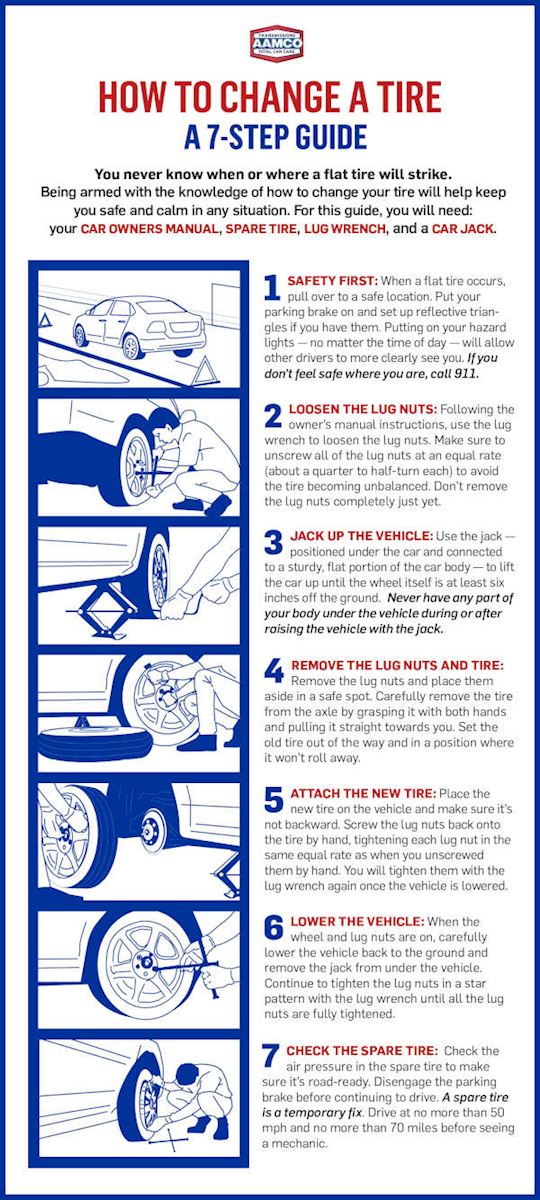 Of course, before this operation, you will need to inflate the tires to the required pressure.
Of course, before this operation, you will need to inflate the tires to the required pressure.
In some vehicles, you will need to drive on any road and at any speed for 20 minutes after resetting the sensors, as long as you do not turn off the engine.
So, start the car, press the reset button and hold it for three seconds. Do not turn off the engine until 20 minutes have passed. You can drive or just let the engine idle for 20 minutes. This method of resetting pressure sensors should work for most vehicles. Again, inflate the tires to the correct pressure before resetting the system.
If the simple methods don't work with your machine, try another method. Start the engine so that the tire pressure monitoring system can register the changes. Then inflate the tire 0.2 bar above the recommended level. After a minute, completely deflate the tire. Wait one more minute to reset the sensors. Then inflate the tire to the optimum pressure level and let the engine run for another minute. The indicator should stop flashing.
Then inflate the tire to the optimum pressure level and let the engine run for another minute. The indicator should stop flashing.
The idea is to reset the entire engine electronics system by cutting off the power supply from the battery. First, make sure all tires are at the correct pressure. After that, turn off the engine, open the hood and disconnect both terminals from the battery. Wait 10-15 minutes. Reconnect the battery and turn on the ignition to check if the indicator lamp goes out.
If the above methods do not work with your vehicle, there is another option. Find a manual for your car or open a forum thread that talks about resetting tire pressure sensors in your car. Look for the combination of steps the manufacturer recommends to reset the TPMS system. Sometimes the combination can be quite strange and even complex.
If all methods fail and the error light continues to flash, the problem may be with the sensors. It is the blinking signal of the tire pressure lamp that often indicates a sensor malfunction. If there is a problem with tire pressure, usually the light will just come on and not blink.
It is the blinking signal of the tire pressure lamp that often indicates a sensor malfunction. If there is a problem with tire pressure, usually the light will just come on and not blink.
So if the light is flashing, one of the sensors may be faulty. Replacing the element is not so easy because it is under the tire. The tire must be removed from the rim to replace the sensor.
After replacement, you will still need to reset the pressure control system for the new sensor to work. Otherwise, the indicator will flash or light up.
Where is the reset button for the tire pressure sensors?
The button is often located directly below the steering wheel. But there may be different options. If you don't find the TPMS reset button there, look around the steering wheel - it should be somewhere in this area.
Difficult to say for all vehicles, but for most vehicles, the travel time before the tire pressure monitoring system resets should be at least 10-15 minutes. If you turn off the engine earlier than 10 minutes after pressing the reset button, the TPMS will still send some error signals the next time the engine is started.
If you turn off the engine earlier than 10 minutes after pressing the reset button, the TPMS will still send some error signals the next time the engine is started.
Drivers occasionally upgrade tires and wheels to larger ones and want their stock pressure control modules to work properly. The problem is that larger or flat-ride tires will have a different optimum pressure level, so the original gauges will always show an error on your dashboard.
One way to solve the problem is to buy other sensors adjusted to the correct tire pressure. Another way is to reset the control system in your car at the service station. Just check which option will be cheaper for you.
It's hard to say why manufacturers haven't added an option to automatically reset tire pressure sensors in cars. In most post-2015 vehicles, the TPMS is autonomous enough that it won't bother you much with reset requests.